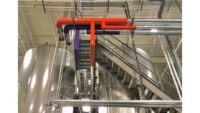Everything will soon be going electric, from the cars we drive to the HVAC systems you folks design. Or so the story goes. There are a few stumbling blocks yet to be overcome.
Everything will soon be going electric, from the cars we drive to the HVAC systems you folks design. Or so the story goes. There are a few stumbling blocks yet to be overcome.
The first is that unless everything operates by wind and solar power directly at the source, which remains unlikely, that electricity has to come from somewhere. That means it needs to travel from a plant to its end-user via transmission lines. According to a recent paper published by the National Bureau of Economic Research, the U.S. lacks the transmission capability needed to meet the demand of our electric future. Getting to the levels needed will take money. A lot of money.
The second obstacle is the destination. The wiring of many structures lacks the capability to meet all the electric needs. Running an electric system for heating and cooling while charging a parking lot full of electric vehicles on top of the existing power demands will require retrofitting the existing electric infrastructure. It takes electricians to do that job, and there aren’t enough of them to meet projected demand.
These are the problems. People like you are the ones to come up with the solutions. But any solution will require a major investment in material and skilled workers.
Of course, all this assumes electrification as the only path forward. Electricity is better than burning fossil fuels, but it isn’t magic. It comes with its own trade-offs, such as the environmental impact of mining the metals needed for batteries and other components.
Still, we’ve decided this is where we’re going. Since that’s the case, we’re going to need a better map.





